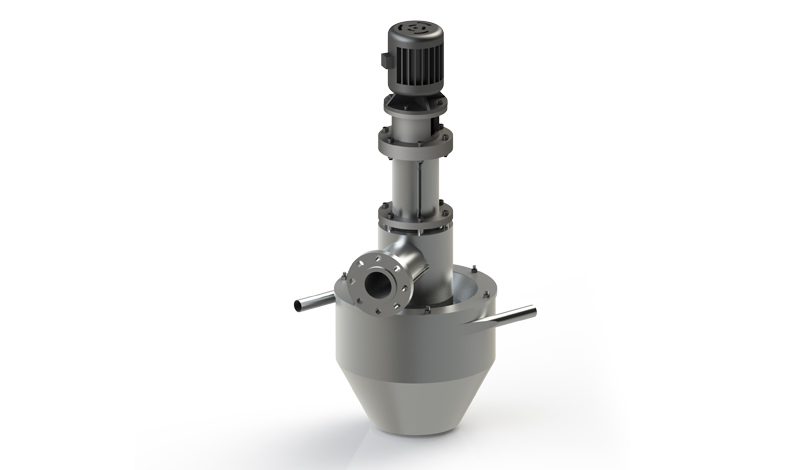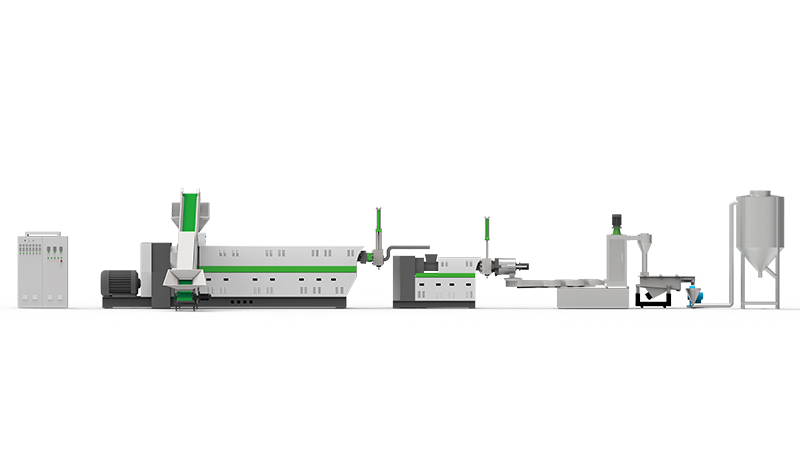

Contact us

The melting and extrusion phase of plastic recycling is […]
The melting and extrusion phase of plastic recycling is a critical step where cleaned and shredded plastic materials are transformed into a form suitable for reuse in manufacturing. This process involves melting the plastic and then shaping it into specific forms, such as pellets or sheets. Melting and extrusion are fundamental in closing the recycling loop, as they allow for the conversion of recycled plastics into raw materials for the production of new plastic products.
The Extrusion Process
Heating and Melting: The first step in extrusion involves heating the shredded plastic to its melting point. This is typically achieved using heating elements or induction heaters. Different types of plastics have distinct melting points, so the process parameters must be adjusted accordingly.
Extruder: The molten plastic is then fed into an extruder, a specialized machine designed for this purpose. An extruder consists of a barrel with a screw inside. The screw is responsible for advancing and compressing the molten plastic through the barrel.
Pressure and Mixing: As the plastic moves through the extruder, it experiences increasing pressure and shear forces. This pressure helps ensure that the plastic is thoroughly mixed and homogenized. Any remaining impurities or contaminants are often expelled during this stage.
Die and Shaping: At the end of the extruder, the molten plastic is forced through a die, which is a specially designed opening that shapes the plastic into the desired form. Dies can vary in shape and size, allowing for the production of various plastic products.
Cooling: Once the plastic has passed through the die and taken its shape, it is rapidly cooled using cooling baths, air, or water. Cooling is crucial for solidifying the plastic into its final form.
Cutting and Pelletizing: In some cases, the extruded plastic is cut into smaller pieces or pellets for easier handling and storage. These pellets can then be used as raw materials in the manufacturing of new plastic products.
Types of Extruders
Single-Screw Extruders: These are the most common type of extruders and are suitable for a wide range of plastics. They are cost-effective and versatile, making them a popular choice for recycling applications.
Twin-Screw Extruders: Twin-screw extruders have two screws that rotate in opposite directions. They provide better mixing and are ideal for processing highly contaminated or mixed plastic waste.
Co-Extruders: Co-extruders have multiple extrusion heads, allowing for the production of multilayered products. This is particularly useful for creating plastic products with specific properties, such as barrier films.
Advancements in Melting and Extrusion
Energy Efficiency: Modern extrusion machines are designed to be more energy-efficient, incorporating features like variable-speed drives and improved insulation to reduce energy consumption.
Automation and Control: Automation and advanced control systems enable precise monitoring and adjustment of the extrusion process. This ensures consistent quality and reduces the risk of defects.
Compatibility with Recycled Materials: Extruders are increasingly designed to handle recycled materials with varying properties. This flexibility is essential for recycling facilities dealing with diverse plastic waste streams.
Specialized Extruders: Some extruders are specially designed for specific types of plastics, such as PET or PVC. These machines are optimized to process these materials efficiently.
PLASTIC FILM COMPACTING AND RECYCLING MACHINE
There is a great difference between the film aggregate compacting granulating machine and the ordinary film granulating machine. The film does not need to be crushed during granulation, which reduces the noise during production. The film is directly transmitted to the compaction chamber through the conveyor belt. The compaction chamber is similar to a film granulator. The loose film is crushed and compacted through high-speed rotation, and the compacted material enters the granulator screw through the feed port on the side wall of the compaction chamber to achieve a high degree of automation and integration.

Copyright © Yuyao Lvdao Plastic and Rubber Machinery Co.,Ltd. Plastic Granulation Line Supplier 浙ICP备11026885号-3



